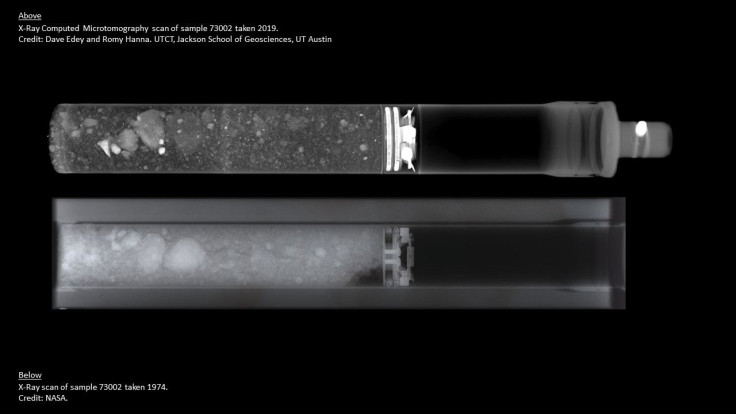NASA Opens Up Moon Rock Sample From 1972 Apollo Mission

After waiting for decades for technology to catch up, NASA has finally decided to open one of the lunar samples an Apollo mission brought back to Earth from the Moon. According to the space agency, studying the sample would help prepare its upcoming Moon mission under the Artemis program.
The sample recently opened up by NASA was collected by the Apollo 17 mission, which was launched in 1972. It contains soil and rock samples collected by the astronauts Jack Schmitt and Gene Cernan during their expedition.
Like the other Moon samples obtained in previous Apollo missions, NASA decided not to immediately open the one from Apollo 17 when it was brought back to Earth. The agency decided to store the samples until it has the necessary technological advancements to study their contents.
On Nov. 5, NASA finally decided to open 73002, which is one of the two samples that will be studied as part of the Apollo Next-Generation Sample Analysis (ANGSA). According to NASA’s scientists, the ANGSA initiative aims to study the Moon’s geographical composition through the samples.
“The findings from these samples will provide NASA new insights into the Moon, including the history of impacts on the lunar surface, how landslides occur on the lunar surface, and how the Moon’s crust has evolved over time,” Charles Shearer, one of the lead scientists for ANGSA said in a statement.
“This research will help NASA better understand how volatile reservoirs develop, evolve and interact on the Moon and other planetary bodies,” he added.
To demonstrate how technology has changed over the past decades, NASA shared X-ray images of the sample 73002 taken in 2019 and 1974. The two images clearly show how technology has improved over the years.
According to Francis McCubbin, an astromaterials curator for NASA, studying the samples using today’s technology will provide new discoveries about the Moon. These findings will help improve the scientific experiments that will be conducted by the upcoming Moon mission for the Artemis program.
“Opening these samples now will enable new scientific discoveries about the Moon and will allow a new generation of scientists to refine their techniques to better study future samples returned by Artemis astronauts,” he said in a statement.
“Our scientific technologies have vastly improved in the past 50 years and scientists have an opportunity to analyze these samples in ways not previously possible,” McCubbin added.
© Copyright IBTimes 2025. All rights reserved.





















